









See story on page 4


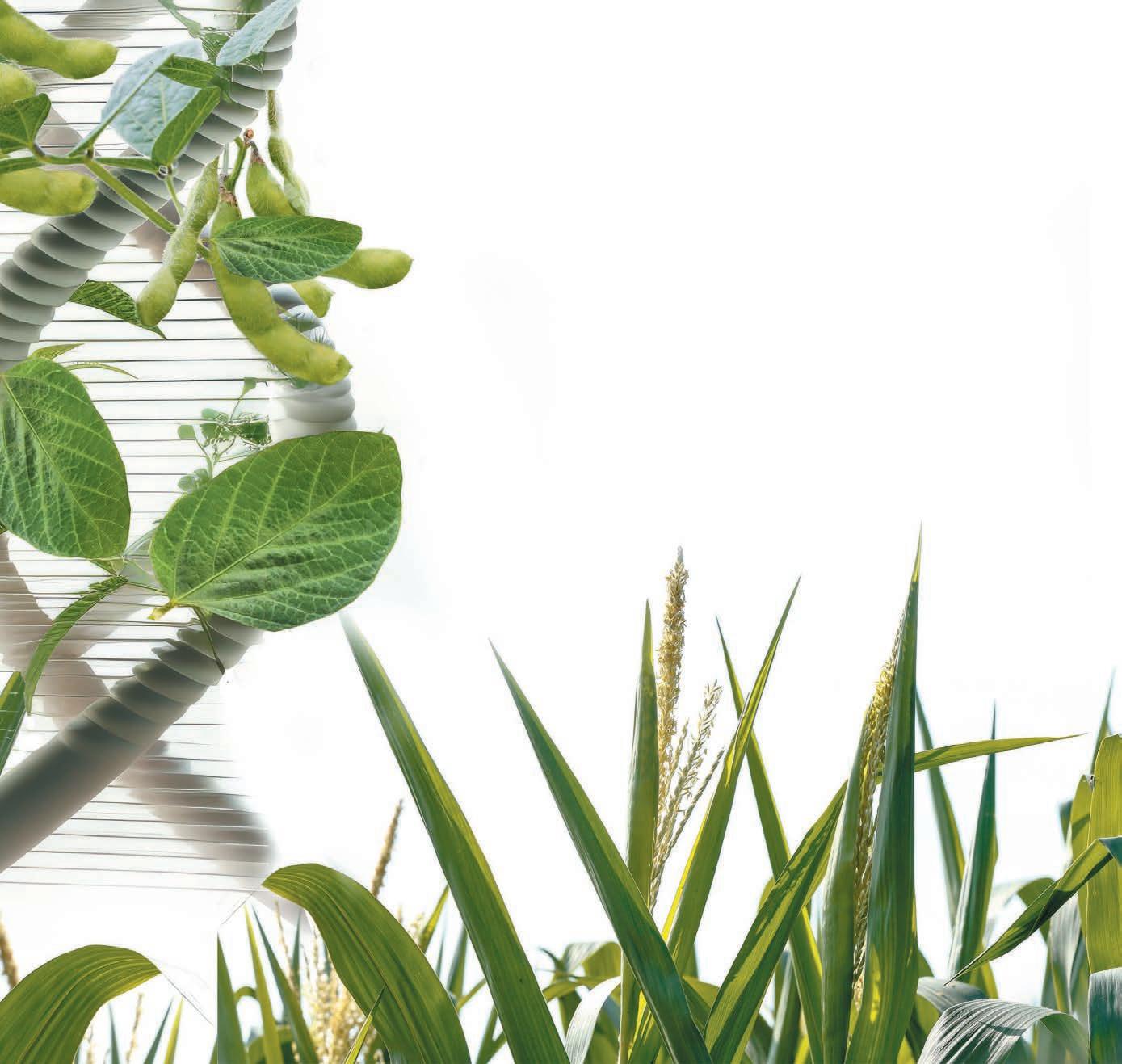


•Wellness for farm families
•Wind, solar power effect on farmland
• Scientiststestingbird-fluvaccines
•and more...




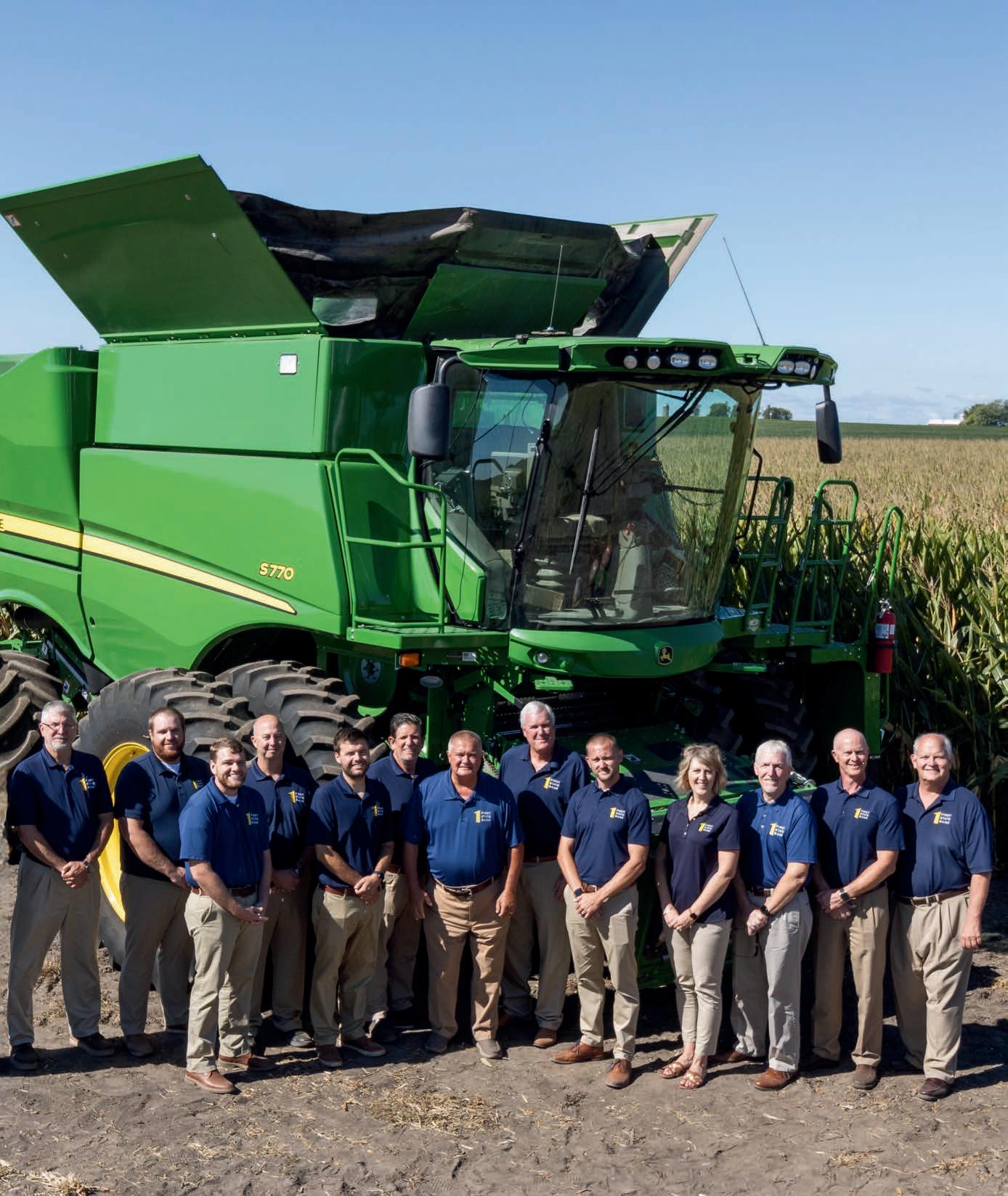



OAK BROOK, Ill. — A peer-to-peer community is available to farmers and their families from across the United States to build farm family wellness.
Farm Foundation conducted a Farm Family Wellness Alliance pilot project in 2020 in Iowa.

Rogge-Fidler
“We had a vision for it to be a national service,” said Shari Rogge-Fidler, president and CEO of Farm Foundation.
“It spread to all of Iowa, then to Illinois and in January of this year we were thrilled to have the resources and partners to launch it nationally,” she said. “It includes an online peer-to-peer community and a suite of services all provided at no cost to farmers.”
Access to the services starts at Togetherall.
“There’s a lot of stressors folks are facing, so to be able to have a platform where you’re able to speak amongst your peers and other people that really get it is hopefully a comforting thing,” said Mary-Lyn Kieffer, senior manager of partnerships for Togetherall.
“This is anonymous, which is very unique to this platform,” Kieffer said. “And it’s monitored 24/7 by live licensed clinicians.”
Once registered, farmers can customize their feed to read about or participate in a variety of topics such as anxiety, depression, recovery or post-traumatic stress disorder.
“The Wall Guide is our clinicians who make sure you are responded to and to encourage other folks to share their support,” Kieffer said. “There is also an option for people to go into a private chat by creating a small group.”
Togetherall has a number of other resources, including self-help courses and articles.
“We were part of the pilot program and are excited about this current option because there is a benefit for folks who speak agriculture and can talk to each other about the unique challenges,” said Amie Merz, senior account manager for Personal Assistance Services.
“Folks can talk with folks that get it and you can be in more than one group such as grief or single parent-

ing,” Merz said.
PAS provides mental health and well-being services.
“When you have connections with the Togetherall network, we are the next step if you want to work on things with your family,” Merz said.
“There are other tools like journaling, goal setting and self assessment,” she said. “These are opportunities for you to learn more about yourself and to get some intervention because sometimes people are reluctant to get help and they need a little support.”
In addition to the online platform, PAS also has a farm-specific phone number, 833-999-FARM, that is answered by agricultural-competent clinicians 24 hours a day.
nicotine cessation, life coaches and financial consultation.
“Everything is individualized to a person’s goal and you choose a time that works for you and your family,” Merz said.
“We have database of affiliates nationwide and you can utilize these services in person, virtually or over the phone,” she said. “The virtual network has really helped to access services because if you live in a rural community now you can see anybody in the state and it gives you more times to choose from — day, evenings or weekends.”
“Anything we can do to reduce that isolation is important.”
Jessica Cabrera AMERICAN FARM BUREAU
“We know your schedules are not 9-to-5 jobs,” Merz said. “So, if you’re not sleeping or its Sunday evening, you can call us.”
Another option is the texting number — 314-451-5272. This number is available from 9 a.m. to 5 p.m. Central Time.
“Everything is confidential, free and available for any agriculturally related person and family in the U.S.,” Merz said.
In addition to family and individual counseling, farmers have access to nutrition and health coaching, financial consultation, retirement coaching, legal consultation, organization and productivity coaches, parenting and childcare consultations, elder care management, career consultation,
The American Farm Bureau Federation is one of the marketing partners for the Farm Family Wellness Alliance.
“We got involved because it was member driven,” said Jessica Cabrera, AFBF managing director of member engagement. “We heard often from our members how important the peer community is and opportunities where the stigma is not so prevalent.”
In 2020, AFBF research showed 68% of farmers surveyed said isolation had an impact on mental health.
“So, anything we can do to reduce that isolation is important,” Cabrera said.
“American Farm Bureau really wants to be in the business of connecting farmers with information and resources to promote their mental health wellness,” the managing director said.
“Sometimes if you just get something off your chest, it might not brew and fester and turn into greater levels of anxiety and stress that can occur when something is bottled up and pressed down for a long time.
“We really like the ability to quickly access this resource and engage immediately when you’re going through a difficult time,” she said. “We need to make sure farmers are taken care of and that’s how we’ll build a sustainable future for agriculture.”
Farm Rescue is also a marketing partner for the alliance. Farm Rescue currently works in eight states — Illinois, Iowa, Nebraska, Kansas, Minnesota, North Dakota, South Dakota, Montana and, starting July 1, Wisconsin.
“We help farm families in crisis from health issues, drought, flood, tornadoes or anything that keeps a family from putting their crop in, taking a crop out or taking care of livestock,” said Terry Johnston, Farm Rescue development officer for the Corn Belt states.
“We come in with volunteers and equipment and do it at no cost to the family,” he said. “We have over 600 volunteers ready, willing and able to help when a family needs us.”
However, Johnston said, the Farm Rescue volunteers are not licensed counselors, financial experts or mental health clinicians.
“When we are helping a family there’s a lot of stress and a lot of needed resources so providing information easily through the alliance to get help is appreciated,” he said.
For more information about the Farm Family Wellness Alliance, go to www.farmfoundation.org.
BLOOMINGTON, Ill. — How did that happen? Are we missing an opportunity for higher yields with genetic advancements?
How can that experience be put to use this year? Those are some of the questions after the surprising 2023 yields.
University of Illinois researchers Tony Studer, a geneticist, and Connor Sible, crop physiologist, provided their insights and recommendations in a recent Illinois Corn Connection podcast with Stu Ellis.
rain,” Studer said of the surprising yields last year.
“The timing of rain is so critical in the development and ultimate yield of corn and soybeans. We got lucky. I think that’s part of it, and I will attribute a lot of it to genetics.
We got lucky. I think that’s part of it, and I will attribute a lot of it to genetics.
“Over time, the genetics have gotten better on the side of resilience and stress tolerance. So, the plants are able to put roots down to really access the moisture that’s down there in our soils we have in Illinois.
Tony Studer, geneticist
Despite adverse weather last year, including an extended dry period, Illinois corn averaged 206 bushels per acre and soybeans hit 63 bushels per acre, much to the surprise of many.
“I think part of it is just luck. We had very timely rains. There were times when I would walk into the field that I thought the crop might start to give up, and then we’d get a
“They’re more stress-tolerant to the point where they can hang in there when we’re not getting rain, they’re not aborting the kernels, they’re not sacrificing yield and that allows you, if you get that rain, to ultimately reach a pretty decent yield out of the crop.”
FERTILITY CHANGES?
With improved stress-tolerant genetics, the researchers were asked: If farmers boost fertility, will that translate to even higher yields?
“I don’t think so. I think really






you’re dealing with from a genetic standpoint two different sets of genes. You’ve got the overall performance of the hybrid that’s going give you that upper yield, and then you’ve got that stress tolerance,” Studer said.

“The genes that are allowing that plant to hang in there aren’t necessarily the ones that are giving you a higher top-end, but they’re the ones that allow you to reach that yield potential.
“Just seeing it perform really well in a year that is bad doesn’t mean adding fertilizer is going to move that top-end yield level. It’s a different set of genes, different mechanisms in that.”

“There are places where we need that fertilizer nutrition, but it really does track down to the 4 Rs,” Sible added, citing the right source, the right rate, the right place and the right timing.
“Our traditional mindset of fertility is the soil test tells us what is potentially available for the crop, and then we look at removal rates — the total amount needed in the season.
“The perspective, though, is do you
think that crop is using all that nutrition at the same time or is it using the same amount of nutrition the entire season. No, it’s the rates of nutrient uptake during the season that is so important.”
Using corn as an example, Sible noted corn could be at the V7, V8 growth stage and two weeks later “it’s above your head.”
“There’s that rapid growth pace on corn. Think about how much nutrition that crop needs in just that short two- to three-week window — can the soil supply keep up with that high demand? Probably not,” the crop physiologist said.
“So, while the soil test may be adequate from a total need, it’s ensuring you have the daily need, and that’s where things like in-season Y-drop or sidedress applications put the fertilizer out right at the phase of peak uptake, the phases where the soil supply is just not enough on a daily basis.”
“And that’s where I think we can start to push yields higher,” he said. “So, maybe not just more fertilizer, but thinking fertilizer placement and timing to match when the crop needs the most in a given day.”
Besides improved stress-tolerant genetics, seed companies continue to improve genetics for higher yields. That also does not translate to the need for more fertilizer. Instead, Studer said, the need is for more effi-
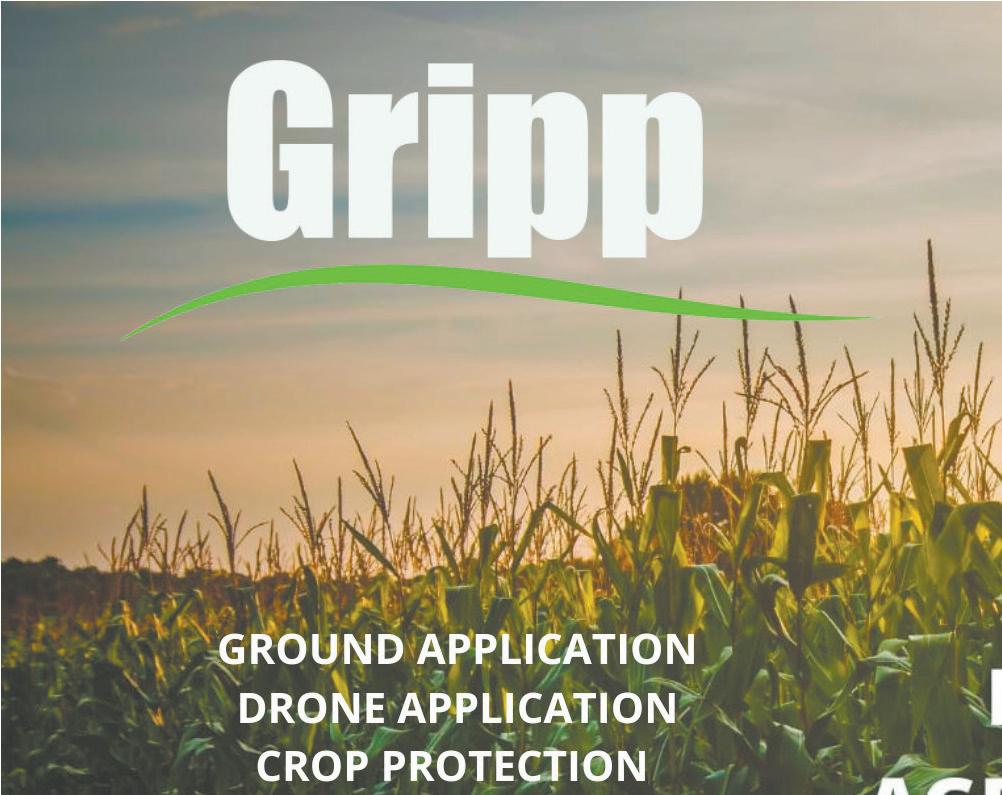
cient nutrient management.
“So, putting that fertilizer where it needs to be when it needs to be there for the plant to grow, but then also on the genetic side how efficiently that plant is able to use nitrogen, for example,” he said.
“We’re not to the point yet where we need to increase the amount of fertilizer we’re putting down. The companies are doing a great job breeding and getting genetic gain in fertilizer use.
“Many decades ago, we were putting a lot of fertilizer on and saw yield bumps because that wasn’t happening previously. But over time, the trend bares out that we’re getting better and better, more efficient at using that nitrogen fertilizer.
“I’m not really ready to say that we need to add more fertilizer yet. I think the gain is still there and the potential for improved management strategies, the genetics being more efficient with the plant using the nitrogen and the grower sort of monitoring all of that in their system.
“They’re picking the seed. They’re doing the management. So, it’s the grower component, too, that matters.”
Corn roots go deeper into the ground beyond the top six inches during the growing season. That leads to the question of fertilizer stratifying away from the deep corn roots when sidedressing.
“In short, we are. The good news is most of our roots are in that top nine inches. The fine roots do go deeper and we get those roots that track into the deep soil, but the bulk of the root zone is in that nine inches,” Sible said.
“This is what we talk to our no-tillers about. After multiple years of notill they see the nutrition is now in the top three inches, whereas our tilled system is in that zero to six inches because we work it in.
“So, that can be a challenge when the nutrition may be above the major root zone. New sources that move better are coming out, things like strip-till, placement, banded fertility — we’re really big proponents of banded fertility, putting it right where the root can get access to it.
“Why should we fertilize the whole soil when we’re skipping every 30 inches? It’s a great question and I think one we can increase efficiency on.”
Sible recommends fertilizer applications before and during the growing season.
“We do know from our nitrogen and phosphorus research that you need enough upfront to convince the plant it can set a high yield. It sets that yield ceiling pretty early in its life. So, for the first part, convince the plant is has enough to go for it,” he said.
“The second part is as that source starts to run out, make sure the plant has additional sources in-season to carry it all the way to the finish line.”


WASHINGTON — Solar and wind farms have become a regular part of the rural landscape and a new report documents the impact the energy sources have on farmland.
The U.S. Department of Agriculture’s Economic Research Service issued a report May 21 that examines land cover and land cover change associated with utility-scale solar and wind development in rural areas from 2009 to 2020.
Widespread expansion of utility-scale renewable energy development in the United States began with growth in the wind energy sector in the 1990s, followed by solar in the mid-2000s.
In 2020, wind-generated electricity was the second largest source of renewable energy after hydropower, comprising 8.4% of total electricity generation. Solar power was third with 2.3%, according to the U.S. Energy Information Administration.
Utility-scale solar and wind projects were located predominantly in rural areas and often on lands used for crop production or animal grazing.
As of 2020, 99.8% of utility-scale wind turbines and 74% of utility-scale solar installations were in rural areas.
“Although there is less solar than wind capacity, solar is growing at a faster rate and is expected to comprise nearly three-quarters of the growth in renewable generation beginning in 2025,” according to the report.
“Further, policies, including the Inflation Reduction Act of 2022, are expected to lead to a more rapid expansion of solar and wind development.
“Despite the growth in solar and wind projects, the cumulative amount of land in rural areas that is directly affected by the development is small relative to the amount of farmland. Still, rural landscape changes and the socioeconomic effects in local communities from nearby solar and wind development may be substantial in some areas.
“After installation, solar sites more commonly changed land cover than wind, including shifts away from agriculture. Wind sites maintained agricultural land cover. This suggests that wind is compatible with agriculture and that land-use competition exists between farmland and solar farms.”








In 2020, the estimated footprint of solar farms was approximately 336,000 acres; the footprint of wind farms was approximately 88,000 acres.
For comparison, there were approximately 897 million acres of land in farms in 2020, so the estimated footprint of solar and wind combined was approximately 0.05% of farmland acres, according USDA’s National Agricultural Statistics Service.
Nearly 80% of the estimated footprint in rural areas was from solar projects, which provided 27% of the capacity.
This footprint does not capture additional physical structures, including transmission lines, which are required to transport the generated electricity.
Typically, a wind farm is spread over a much larger land area than a solar farm. Wind turbines must be spaced apart to maximize wind flow.
However, estimates suggest that 96% to 99% of the land in a wind farm does not contain any permanent physical structures.
The direct land cover impact of a wind farm is limited to the relatively small area on which service roads, turbine pads and other infrastructure are constructed.
Alternative land uses, such as farming or ranching, are typically maintained on the land within the wind farm.
In solar projects, spacing between panels is limited, and the land cover in the area beneath the solar panels is removed prior to development, leav-
ing bare soil on which the solar panels are constructed.
While solar farms tend to be smaller than wind farms, the direct land cover impact of a solar farm — the area beneath solar panels and other infrastructure — typically extends throughout a larger portion of the solar farm.
Here are some other findings.
• 43% of solar farms were installed on land that was in cropland and 21% were installed on land that was pasture-rangeland prior to development.
• Wind turbines were predominantly installed on land that was classified as cropland, at 56%, and pasture-rangeland, at 36%.
• Solar projects were more commonly installed on nonagricultural land, at 17%, than wind turbines, at 3%.
• In the Midwest, 66% of solar farm sites were characterized as cropland prior to installation. In the Plains and the West, most solar sites were pasture-rangeland, at 60% and 51%, respectively.
• 93% of wind turbine sites in the Midwest were classified as cropland prior to installation. In the Plains, 45% of turbine sites were pasture-rangeland, and in the West, 65%.
• Land cover changed at 26% of solar sites, but only 5% of wind sites; 15% of solar sites shifted out of agriculture after installation; for wind, it was less than 1%.
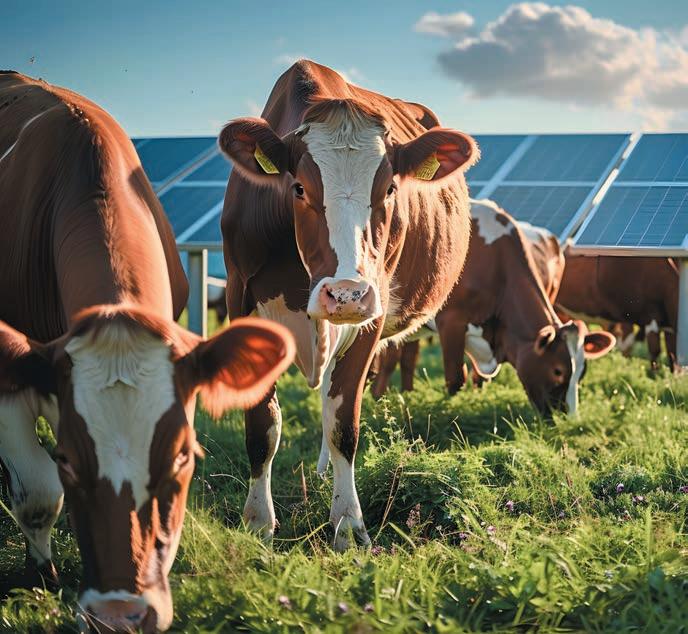
• Typically, solar sites that were categorized as cropland prior to installation remained in the same land cover category after installation, at 82%. For wind turbines, the share was 99%.
• 73% of solar sites and 92% of wind turbine sites that were categorized as pasture-range prior to development
maintained the same land cover category after development.
• For sites categorized as continuous cropland prior to installation, a higher share of solar sites, at 36%, was fallow, or uncultivated, in at least one of the three years after installation, compared to wind’s 7%.







TAYLORVILLE, Ill. — Soil health and quality play a significant role in the nutritional value of pastures and cover crops, determining grazing strategies and sustainability.
clude:
• Explore management programs to reduce N and P runoff in cropping plans.
• Discover cover crops in livestock and cropping programs.
• Updates on P and K recommendations for field crops in Illinois.
• Look at the history of soil testing results for Illinois.
• Transition from a family farm to a farm-to-plate operation.

The Land Pro LLC land brokerage marketing system attracts serious, qualified buyers to every sale, regardless of whether it is an auction or traditional exclusive listing. Our specialized expertise ultimately maximizes your property’s sale price. Visit landprollc.us to find out if your property is suited for an auction or a traditional exclusive listing!
Attending the University of Illinois Extension Dudley Smith Farm Field Day this summer will help producers break down soil components impacting quality, explore research findings and leave with options to employ better soil health changes in their cattle, pasture and farming operations.
Dudley Smith Farm is where tradition drives sustainable agriculture practice into the future through hands-on research opportunities.
Attendees will hear industry updates and application examples on-site at the field day beginning at 9:30 a.m. June 20 at the research center, 2200 E. 600 North Road, off Route 29 between Taylorville and Pana in Christian County. A free lunch will be provided. Field day presentation topics in -
• Explore grazing strategies for beef producers.
• Discuss related crop sciences research findings from U of I Urbana-Champaign.
A farm tour of field cropping systems and the beef paddocks will conclude the day.
Advance registration by June 17 is required to receive lunch.
Check out the full ag-enda, speakers and registration at go.illinois.edu/ DSFFieldDay24.


NORTH MANCHESTER, Ind. —
Kipster egg farm announced it will be one of the first U.S. egg brands to adopt in-ovo egg sexing this fall to end male chick culling.

In-ovo sexing is an approach that allows for the sex determination of chick embryos during incubation before they develop sentience, aiming to prevent the hatching of males.
“In-ovo sexing is a crucial step forward that will allow us to eliminate chick culling right away,” said Ruud Zanders, cofounder of Kipster.
“This technology provides an immediate and effective solution as we continue to explore sustainable meat production that meets our high welfare standards.”
More than 300 million male chicks are killed each year after they hatch. Kipster’s goal is to utilize all animals born into its farm system, including raising roosters for animal protein.
However, the U.S. meat supply chain is not currently set up to process males of the breed commonly used for layer hens. This innovation will allow the company to chase its goal.
“The introduction of in-ovo sexing technology will allow specialty egg producers to create a new value-added category of more ethical






eggs that will be massively successful in the market,” said Robert Yaman, CEO of Innovate Animal Ag.
“Cost-effective technological solutions to major challenges like chick
culling are critical to modernizing the U.S. egg supply chain and restoring consumer trust in animal agriculture.” Learn more at www.kipster.farm.






GALESBURG, Ill. — When it comes to farming, experience is often the best teacher. This June, producers can get answers to their questions about installing edge-of-field conservation practices by connecting with farmers who have first-hand knowledge at the Cultivating Conversations:
How
and Why Illinois Farmers Implement Edge-of-Field Practices panel discussion for west-central Illinois.
Four local producers will share their experiences and valuable lessons learned along the way before answering questions about their use of edgeof-field practices in this free event.
Those who attend will be able to network with other farmers, learn how practices work, explore costshare opportunities and discover local professionals installing practices such as buffer strips, constructed wetlands and bioreactors that are designed to capture nutrient and sediment and keep them out of nearby bodies of water.
“We want to share real- life experiences of farmers who have used edgeof-field practices and not shy away from the considerations and complications that come up,” said Rachel Curry, University of Illinois Extension agriculture and agribusiness educator. “Farmers listen to other farmers when it comes to stewarding their land.”
The conversation also will include a discussion about the Illinois Nutrient Loss Strategy led by Curry and strategies that producers can use when talking about conservation practices with others led by Catherine DeLong, Iowa State University water quality expert.
The program is from 9 a.m. to 2:30 p.m. on June 25 at the Knox County
Farm Bureau, 180 S. Soangetaha Road, Galesburg.
Sign up at go.illinois.edu/EdgeOfField or call 309-342-5108.
A light breakfast and lunch will be provided.
This program is presented in collaboration with the Illinois Sustainable Ag Partners, Midwest Dairy, Illinois Soybean Association and Association of Illinois Soil and Water Conservation Districts.
Across Illinois, farmers are working together to reduce the loss of the nutrients nitrogen and phosphorus from fields, which can pollute local waterways, contaminate drinking water supplies, lower property values, hinder recreational opportunities and harm local businesses and tourism.






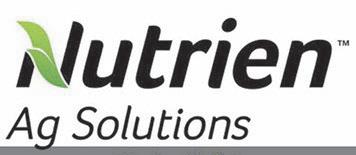

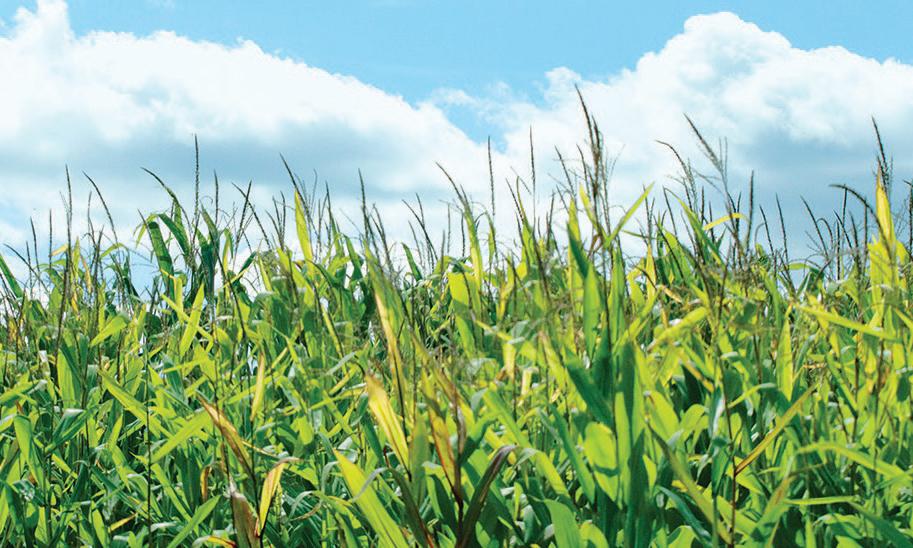



PHILADELPHIA (AP) — The bird-flu outbreak in U.S. dairy cows is prompting development of new, next-generation mRNA vaccines — akin to COVID-19 shots — that are being tested in both animals and people.
Next month, the U.S. Agriculture Department is to begin testing a vaccine developed by University of Pennsylvania researchers by giving it to calves.
The idea: If vaccinating cows protects dairy workers, that could mean fewer chances for the virus to jump into people and mutate in ways that could spur human-to-human spread.
Meanwhile, the U.S. Department of Health and Human Services has been talking to manufacturers about possible mRNA flu vaccines for people that, if needed, could supplement millions of bird flu vaccine doses already in government hands.
“If there’s a pandemic, there’s going to be a huge demand for vaccine,” said Richard Webby, a flu researcher at St. Jude Children’s Research Hospital in Memphis. “The more different (vaccine manufacturing) platforms that can respond to that, the better.”
The bird flu virus has been spreading among more animal species in scores of countries since 2020.
It was detected in U.S. dairy herds in March, although investigators think it may have been in cows since December. Recently, the USDA announced it had been found in alpacas for the first time.
At least three people — all workers at farms with infected cows — have been diagnosed with bird flu, although the illnesses were considered mild.
But earlier versions of the same H5N1 flu virus have been highly lethal to humans in other parts of the world.
Officials are taking steps to be prepared if the virus mutates in a way to make it more deadly or enables it to spread more easily from person to person.
Traditionally, most flu vaccines are made via an egg-based manufacturing process that’s been used for more than 70 years.
It involves injecting a candidate virus into fertilized chicken eggs, which are incubated for several days to allow the viruses to grow.
Fluid is harvested from the eggs and is used as the basis for vaccines, with killed or weakened virus priming the body’s immune system.
Rather than eggs — also vulnerable to bird flu-caused supply constraints — some flu vaccine is made in giant vats of cells.
Officials say they already have two candidate vaccines for people that appear to be well-matched to the bird flu virus in U.S. dairy herds.
The Centers for Disease Control and Prevention used the circulating bird flu virus as the seed strain for them.
The government has hundreds of thousands of vaccine doses in prefilled syringes and vials that likely could go out in a matter of weeks, if needed, federal health officials say.
They also say they have bulk antigen that could generate nearly 10 million more doses that could be filled, finished and distributed in a matter of a few months.
CSL Seqirus, which manufactures cell-based flu vaccine, recently announced that the government hired it to fill and finish about 4.8 million of those doses. The work could be done by late summer, U.S. health officials said.
But the production lines for flu vaccines are already working on this fall’s seasonal shots — work that would have to be interrupted to produce millions more doses of bird flu vaccine.
So, the government has been pursuing another, quicker approach: the mRNA technology used to produce the primary vaccines deployed against COVID-19.
These messenger RNA vaccines are made using a small section of genetic









Michael Alvarado
Spring Valley (815)664-4145

Ron Behrends Tiskilwa (815)646-4121

Tyler Hansen Walnut (815)379-9297

Leynaud Spring Valley and Princeton (815)872-0914

Mike Morris Princeton (815)872-3333

TJ Scruggs Princeton (815)872-3333